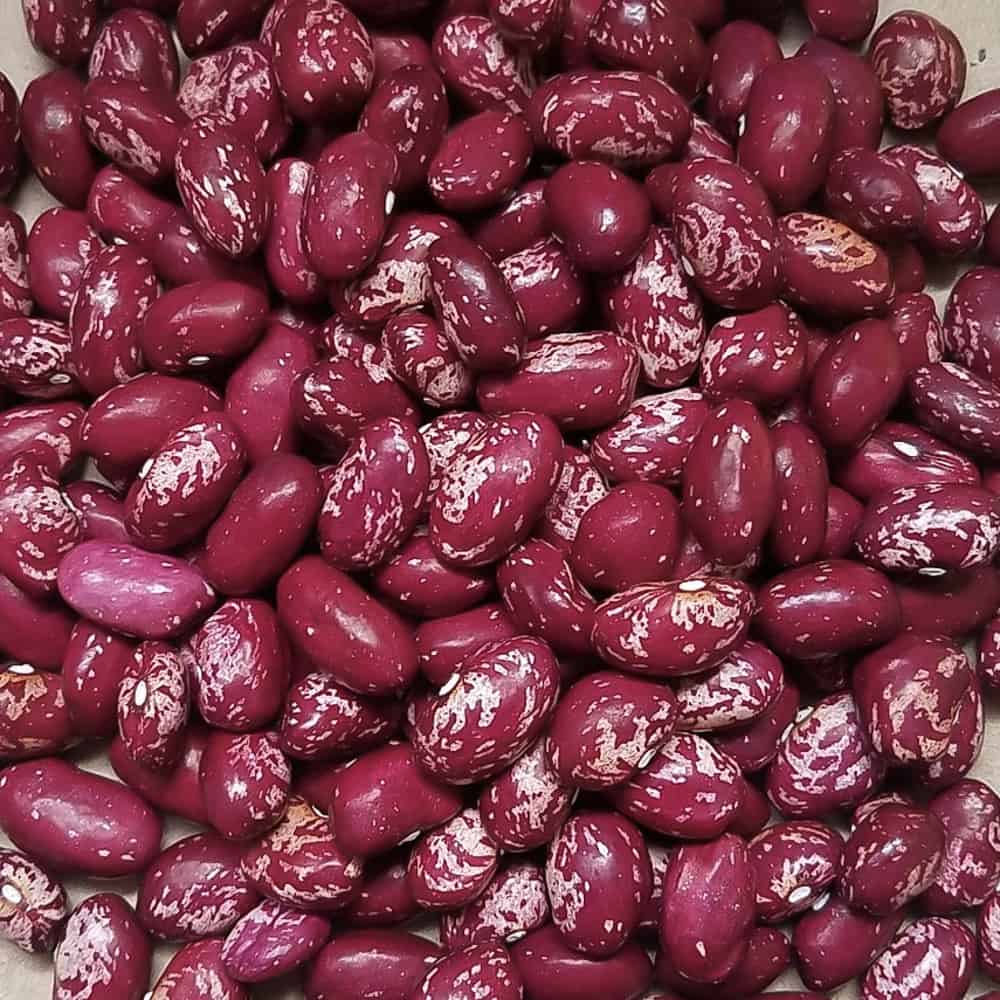Bush Dry Bean, Whipple (Organic)
Phaseolus vulgaris. Purple Speckled. 95 days.
Whipple is on our short list of favorite bean varieties that are adapted to the Pacific Northwest. Great rich flavor. We think it is especially good in chili and paired with copious amounts of garlic. Vigorous bush plants may have short runners. The beans themselves resemble Early Warwick but are larger and a darker maroon color. The Whipple Family, for which this bean is named, worked closely with Martin Luther King Jr. before moving to Douglas County, Oregon, in the 1970s. Eventually Whipple dry bean was introduced to local growers and gardeners via seed swaps.
Seed produced by White Oak Farm in Albany, Oregon.
| Geographical Origin |
|---|
Direct sow 1″ deep May through June in rows that are 1′ apart. Thin seedlings to 3-6″ spacing. Protect early sowings from frost. Stop irrigating in early August. Harvest beans from pods that are fully dry. Shell by hand, by dancing, or by driving on beans spread on a tarp. Winnow to clean. Test for dryness with a hammer – dry beans shatter.
Seed Saving
Some cross-pollination may occur, but beans mostly self-pollinate. For more info on growing dry beans, check out our blog post at: seedambassadors.org/we-love-growing-dry-beans-you-might-too/






Haley S (verified owner) –
Where did you grow this variety? Washington
I grew these last year strictly for seed increase and got over a pound for virtually no effort. This year (2023) they were my main dry bush bean, and precisely 50 plants provided over 4 pounds of perfect dry beans for our winter soups and chili. The plants were, again, no trouble in the garden and thrived from a mid-May sowing with twice-weekly row drip watering. Most of the pods were dry and ready before the end of August, so plenty of time before the rains to get them in.
I haven’t grown tons of other dry beans before, so I can’t swear that their productivity is as remarkable as Carol Deppe’s Gauchos (growing those next year!), but if Whipple does this well as a set-it-and-forget-it food crop, then its looks alone might make up for any possible lack in that department. This will be our red bean for the foreseeable future.
Upvote if this was helpful (0) Downvote if this was not helpful (0) Watch Unwatch Flag for removal